Galleries
Trade War? Trade More, Say the Hip Western Art Dealers Popping Up at Condo Shanghai
Dealers participating in Condo Shanghai find audiences eager to discover new work as the gallery exchange model gains more traction.
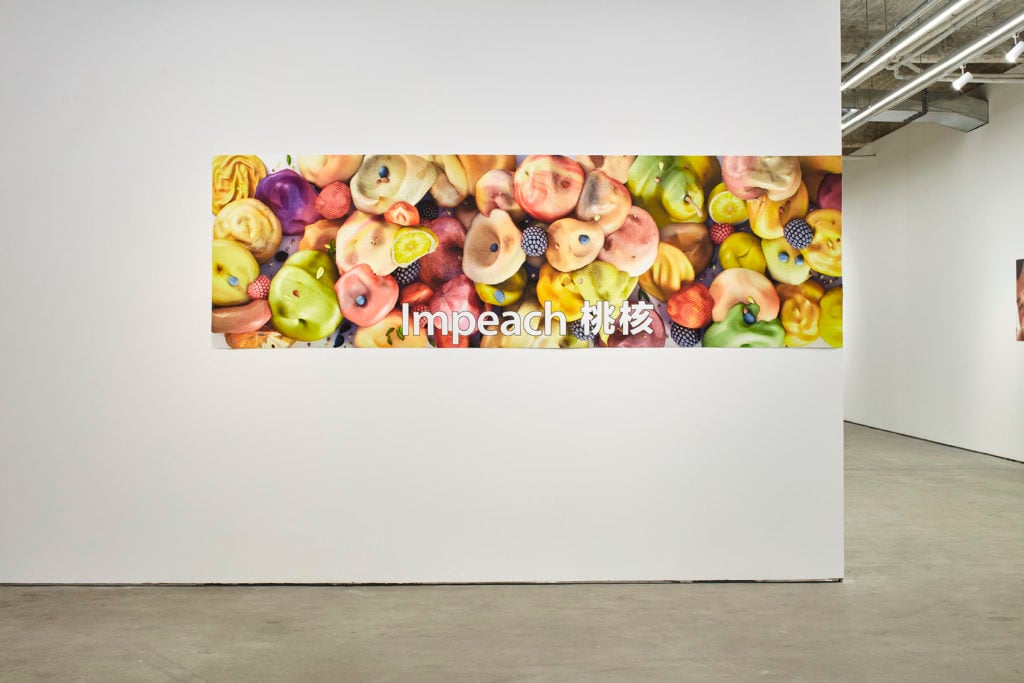
Dealers participating in Condo Shanghai find audiences eager to discover new work as the gallery exchange model gains more traction.

Naomi Rea &
Eileen Kinsella

The US and China are on the verge of a trade war. On Wednesday, President Trump suggested raising a proposed tariff on Chinese goods—including art and antiques—from 10 percent to 25 percent. But within China, a small coterie of Western dealers are taking the opposite route and swapping protectionism for collaboration. Since July 7, 13 dealers have set up shop inside nine galleries to sell their wares for the first edition of the gallery-share initiative Condo in Shanghai, which closes August 26.
Vanessa Carlos, the art dealer who launched the Condo complex in London back in January 2016, tells artnet News that Shanghai was “an obvious choice” for Condo in Asia. While it has a vibrant art scene and ample audience of curators, collectors, and gallery-goers, its art market is at an earlier stage and less frenetic than that of Hong Kong.
At a time when developing a client base in Asia is a top priority for many Western galleries, the Condo model also offers dealers an opportunity to provide valuable exposure for their artists without shouldering the hefty costs and bureaucratic red tape associated with traditional art fairs on the mainland.
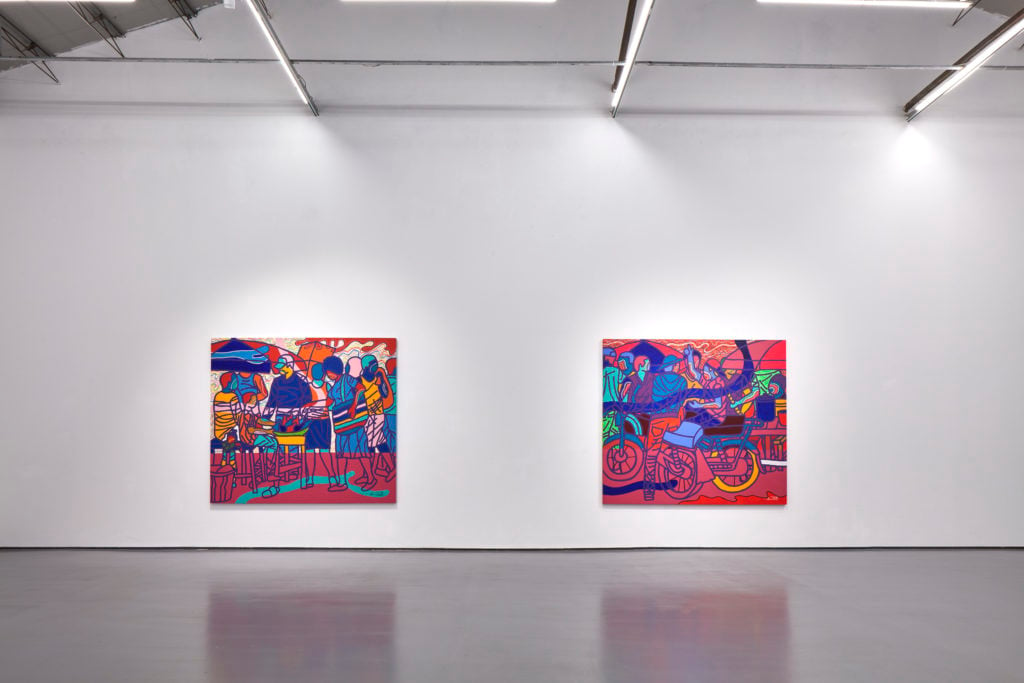
Installation view of Ajarb Bernard Ategwa, courtesy of Peres Projects, Berlin. Photo courtesy AIKE Gallery, Shanghai.
“Condo Shanghai is an opportunity to show our artists in China in a meaningful way,” says the established London dealer Sadie Coles. “Not only are the artworks installed for nearly two whole months in Shanghai, but they are shown in dialogue with Chinese artists, and within the context of a great Chinese gallery.”
For Condo, the gallery is showing two younger artists from its roster—Israeli artist Uri Aran and American painter Ryan Sullivan—at ShanghART Gallery alongside local artist Geng Jianyi and the photography collective Birdhead.
“There has been a clearly felt market boom in China over the past decade—similar to that experienced in New York in the ’80s and London in the ’90s—that feels now naturally to have settled,” Coles says.
Indeed, although the longest-running art fair in Shanghai, SH Contemporary, was called off in 2015 after a slew of battles with censorship and customs, other fairs—including Shanghai Photo, West Bund Art & Design, and Art 021—are slated to go ahead this fall.
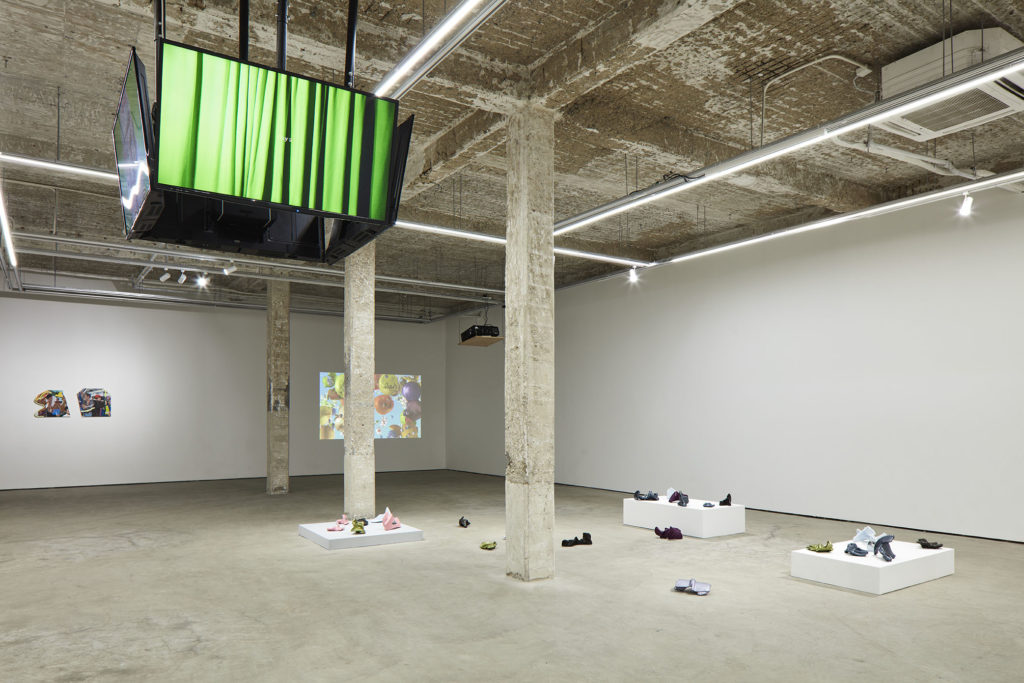
Installation view, courtesy greengrassi, London; J:GALLERY, Shanghai; Project Native Informant, London.
Just under a month into the Condo experiment, some of the 13 dealers participating in Shanghai’s Condo are sanguine. Emma Astner, the co-founder of Glasgow-based gallery Koppe Astner, told artnet News she thinks Condo is “about building a dialogue, not breaking a market.” But while dealers may not be raking in the dough, there is a palpable feeling of excitement about a scene many feel is poised to explode.
The Chinese edition of Condo is spearheaded by Lorraine Kiang Malingue of Edouard Malingue gallery. Malingue tells artnet News that so far, the process has been “very smooth,” and she is already thinking about expanding the scale next year. “There is certainly a strong interest in the Chinese market, and I find most local Chinese galleries very open-minded for collaboration,” she says.
Kiang Malingue opened Edouard Malingue in Shanghai in 2016, six years after opening in Hong Kong. “Compared with Hong Kong, there is more room for younger galleries to nurture emerging artists in Shanghai,” she says. “Collectors are keen to see and discover new things, and I find that energy extremely refreshing. There is also a growing generation of younger collectors who are in process of defining their taste.”
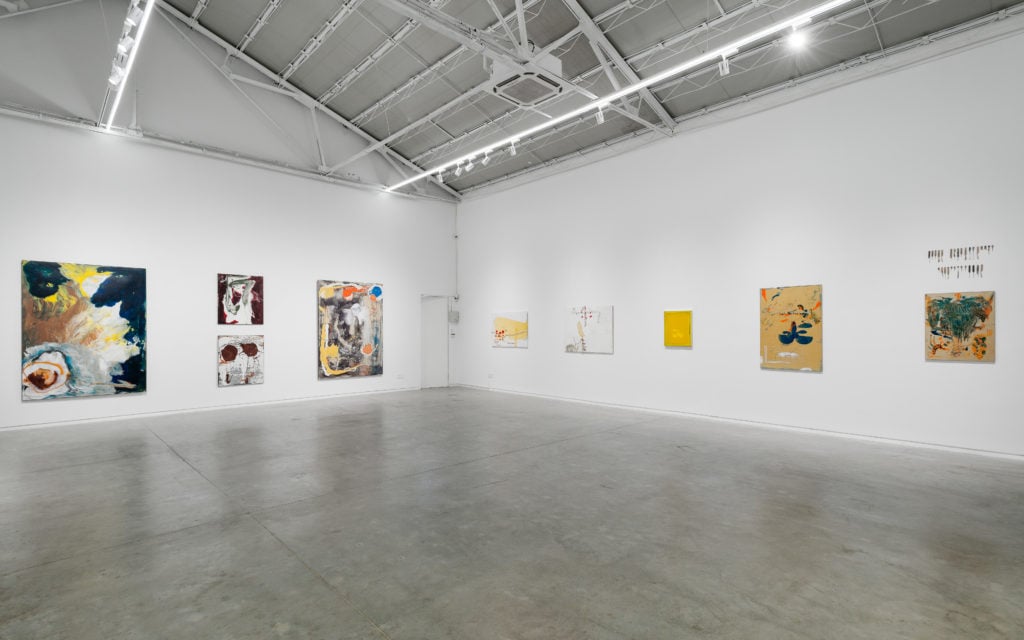
Installation view, ShanghART Gallery hosting Sadie Coles HQ with Uri Aran and Ryan Sullivan, Condo Shanghai. Copyright the artists, courtesy Sadie Coles HQ, London.
Many of the visiting galleries have already developed a presence in China through fairs and institutional shows. But they see Condo as an opportunity to introduce younger, less commercial, or less familiar artists to a Chinese audience.
Vanessa Carlos’s gallery Carlos/Ishikawa, for example, brought work by young painter Issy Wood (b. 1993) to MadeIn gallery. The Berlin-based Peres Projects, meanwhile, presented paintings by Cameroonian artist Ajarb Bernard Ategwa. The gallery thought his depictions of his rapidly developing hometown, Douala, might resonate in Shanghai given its significant Chinese migrant presence.
Jiangnan Wang, a sales representative for König Galerie in Asia, told artnet News that the gallery has a clear game plan for gaining market traction in the region. In recent years, König has participated in Art Basel in Hong Kong twice and tried out Art Shenzhen and Art021 last year. Its artists have also been included in exhibitions at Shanghai’s HOW Art Museum and Yuz Museum. Later this year, the gallery will take part in Photo Shanghai and West Bund, and its artist Andreas Mühe will have a solo exhibition at Red Brick Art Museum Beijing.
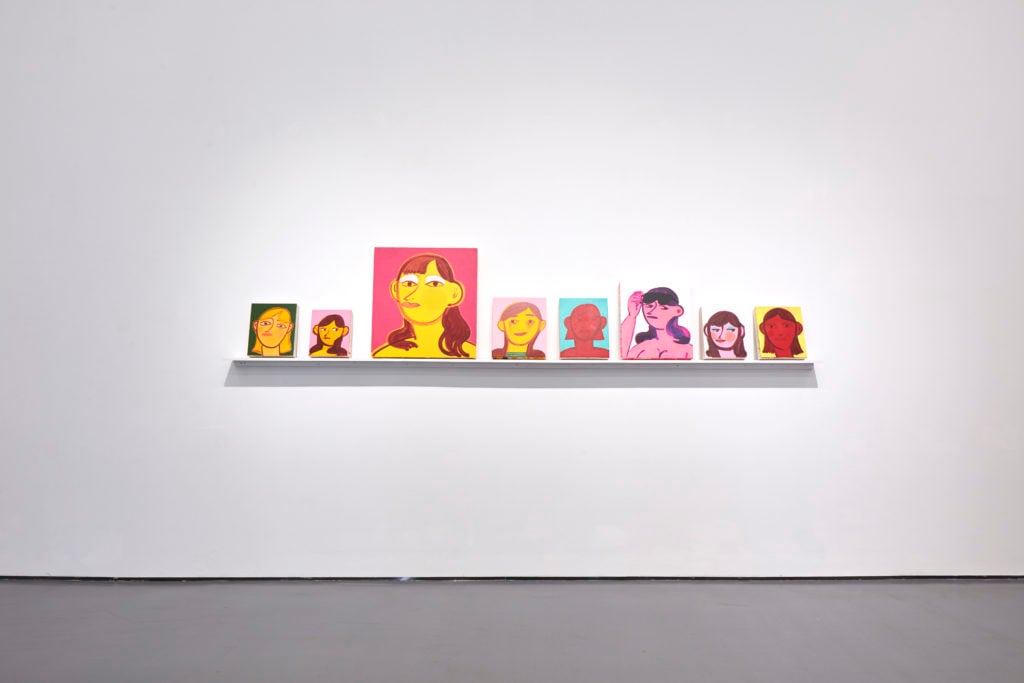
Installation view “All the Girls” (2018). Courtesy of the artist, Koppe Astner, Glasgow and Soy Capitan, Berlin at AIKE Gallery, Shanghai.
Jiangnan says the gallery has already made some headway with new clients in Shanghai, who he describes as “young and curious.” But they will need more time to familiarize themselves with its program. “China is very big, of course, [and] the clients are also very different,” he notes. “Beijingers have different mentality and cultures from the Shanghainese; they aren’t the same as the German clients.” Beijing clients, for instance, are quicker to buy than their Shanghai counterparts, he says.
For some dealers, the Condo experience has served to disprove widely held assumptions about the Chinese market. François Ghebaly of the eponymous LA-based gallery says that the Mexican artist Yoshua Okón, who creates political videos cast with members of marginalized groups, was a natural fit for the region. “The art shown in China is much more politically engaged than in the US… despite the lurking censorship,” he says.
For many, Condo Shanghai is also an opportunity to get outside the reductive confines of an art fair and present art as it is meant to be seen: in the gallery. “We’ve never participated in any fair or fair-like project with Misako & Rosen within so-called ‘Asia’ out of principle,” Jeffrey Rosen of the Tokyo-based gallery Misako & Rosen tells artnet News. At fairs, Rosen says, the art becomes secondary to commerce. He believes the market for an artist should develop out of exhibitions and museum shows, which can offer context for the work.
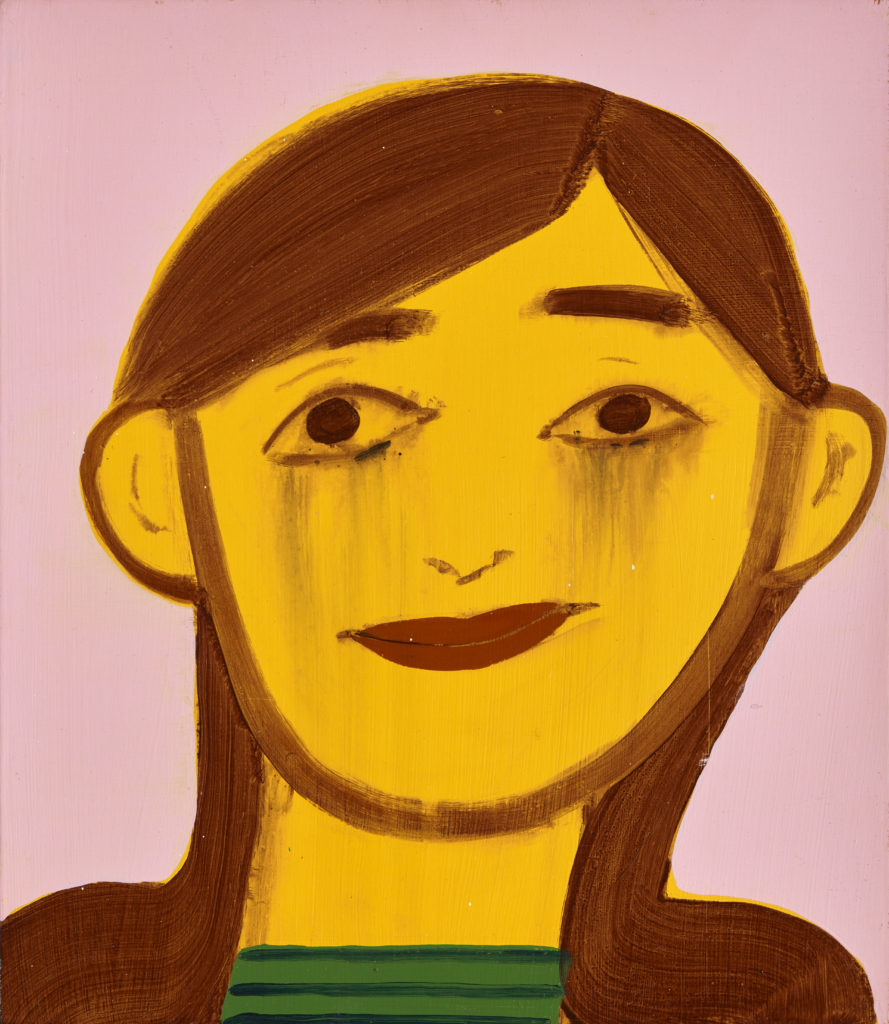
Grace Weaver’s portrait of a girl (6) (2018), Courtesy of the artist, Koppe Astner, Glasgow and Soy Capitan, Berlin at AIKE Gallery, Shanghai.
Nevertheless, following a successful collaboration with Shanghai’s Gallery Vacancy, Rosen says the gallery might now consider breaking its fair embargo. “There seems to be a market energy in Shanghai that you don’t feel in Tokyo,” he notes. He was pleased to meet young people who seemed genuinely interested in becoming collectors—although he adds that many of them currently evaluate art for its “selfie-potentiality or Instagrammability.”
Like other participants, Sadie Coles regards Condo as principally “a collaboration between galleries” rather than just a market event. The exchange model, she says, gives local and international audiences “another channel for viewing artwork.”
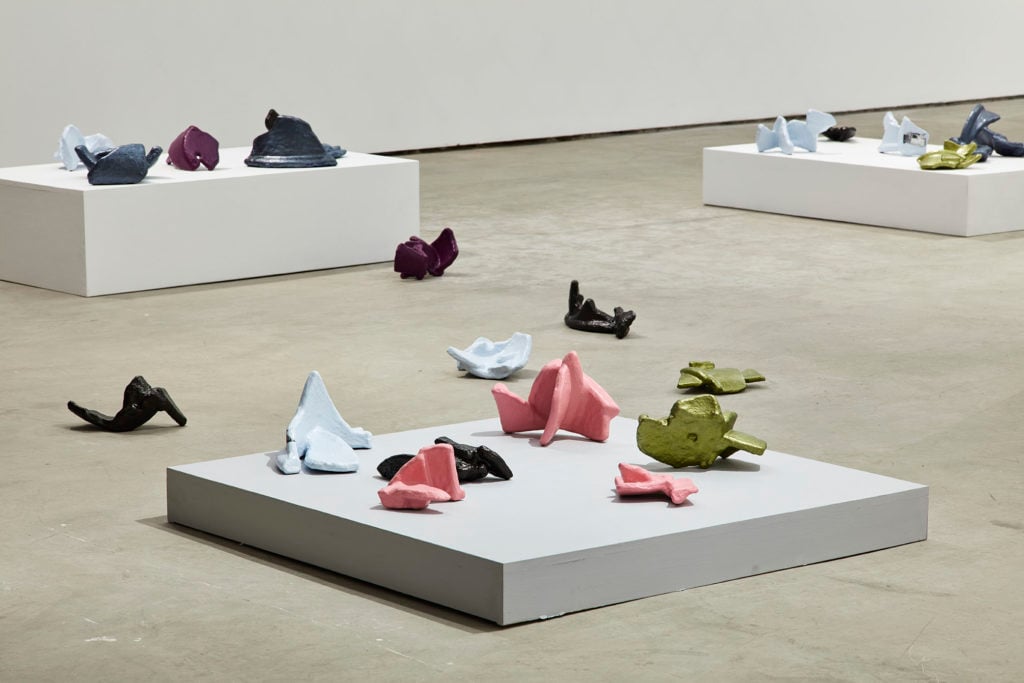
Installation view, courtesy greengrassi, London; J:GALLERY, Shanghai; Project Native Informant, London.
Asked what stood out or surprised her about the scene or sales, Coles reiterated a point made by several of the visiting galleries. “There has been much discussion about the Chinese contemporary art world as if it exists as a completely separate entity,” she says. But while the scene has its own history, artists, and discourse, galleries in China have followed a similar trajectory to those in both Europe and America.
“Perhaps the most surprising aspect about the gallery scene in China is really how familiar it is,” she says.